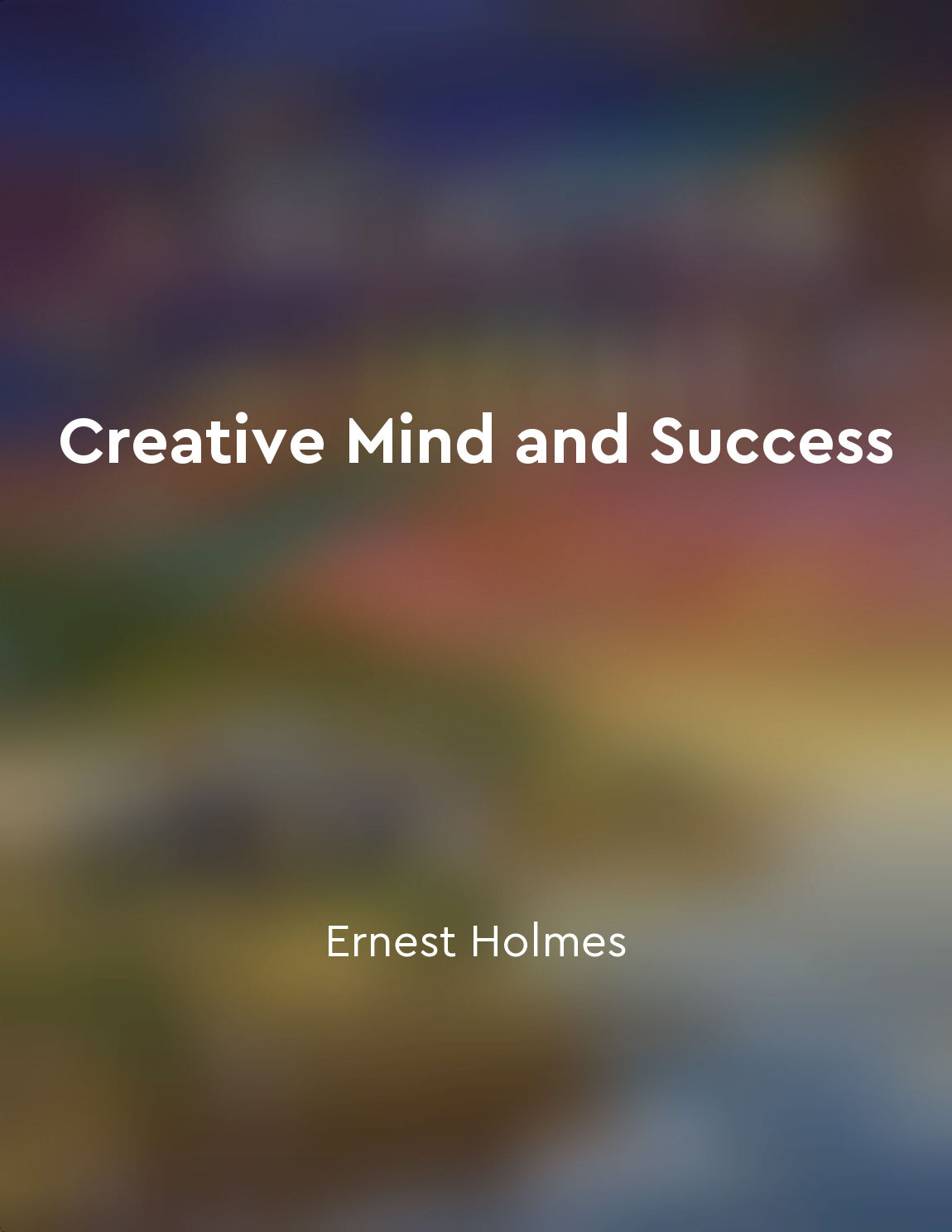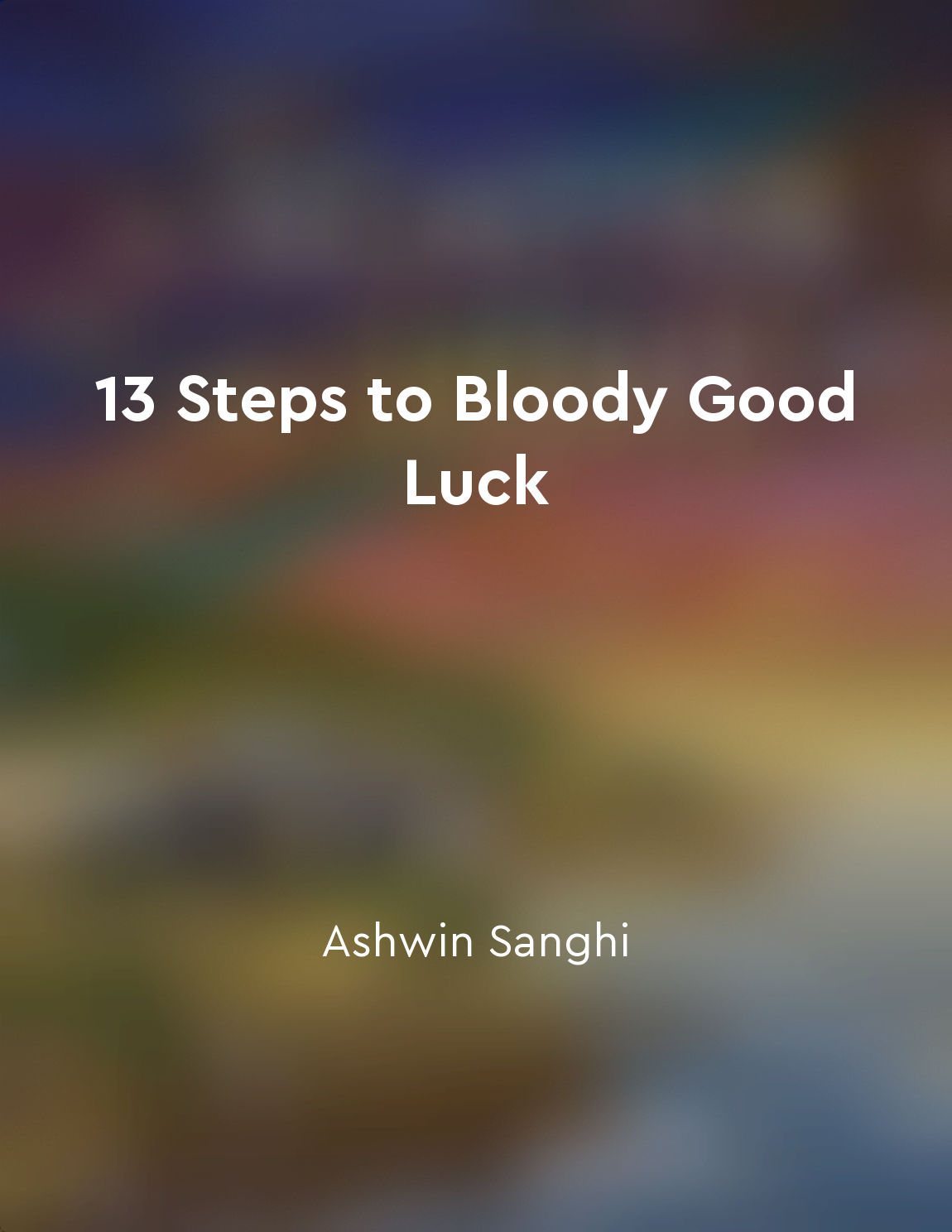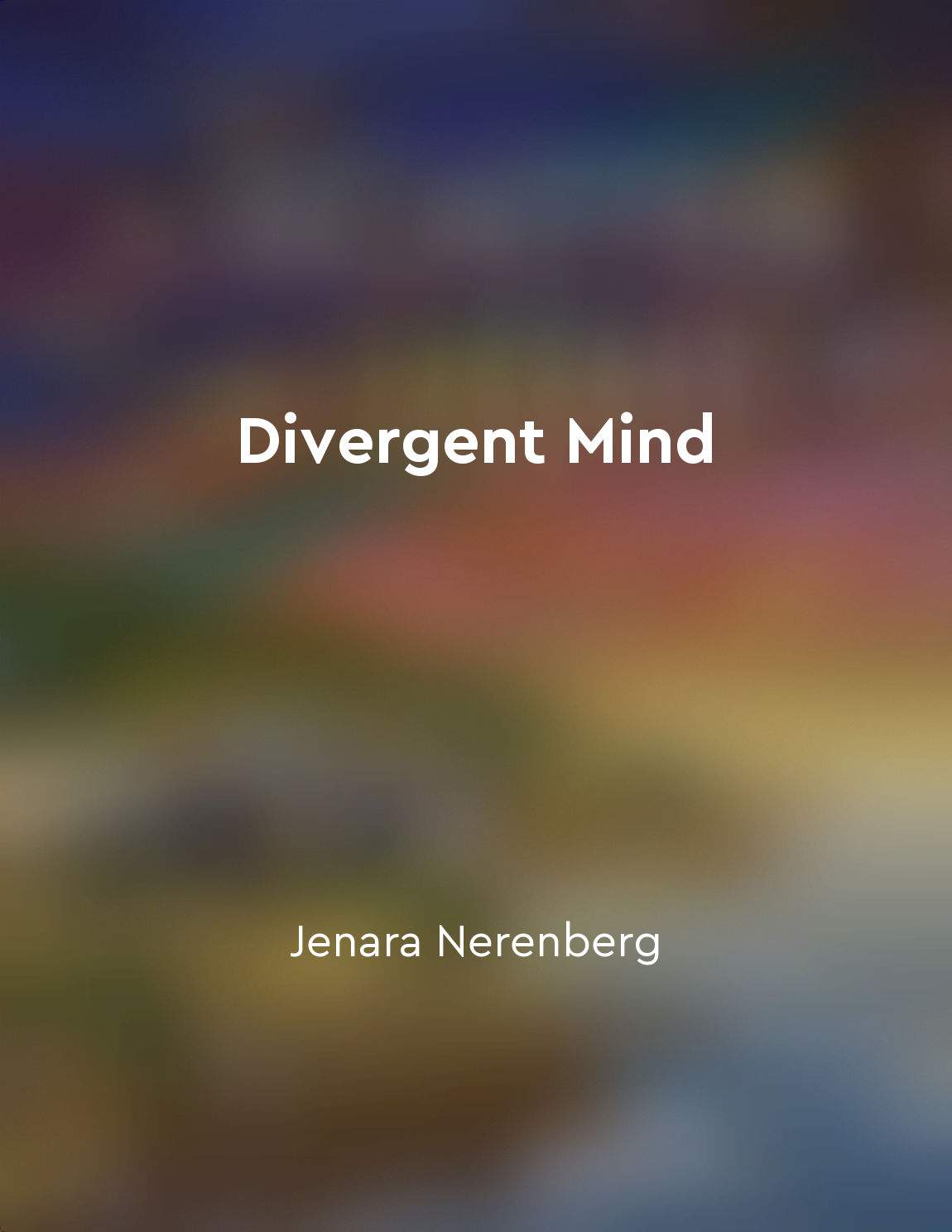Creative thinking involves looking at problems from multiple angles from "summary" of Creativity by John Cleese
Creative thinking is not a linear process. It does not follow a straight path from problem to solution. Instead, it involves exploring different perspectives and angles to uncover innovative ideas and solutions. When faced with a problem, our natural inclination is to approach it from a familiar angle, relying on past experiences and assumptions to guide us. However, this limited perspective can often lead to predictable and unoriginal solutions. By looking at problems from multiple angles, we open ourselves up to new possibilities and insights. We challenge our assumptions and push beyond our comfort zones, allowing for a more expansive and creative approach to problem-solving. This process of exploration and experimentation is essential for fostering creativity and innovation. One way to cultivate this mindset is through the practice of divergent thinking. Divergent thinking involves generating a wide range of possible solutions to a problem, without immediately judging or discarding ideas. This free-flowing approach encourages us to explore unconventional and unexpected avenues, leading to fresh perspectives and breakthroughs. Another key aspect of creative thinking is the ability to connect seemingly unrelated ideas. By drawing upon diverse sources of inspiration and knowledge, we can create new connections and associations that spark creative insights. This process of synthesis and integration allows us to see familiar problems in a new light, uncovering innovative solutions that may have gone unnoticed before.- Creative thinking is about embracing complexity and ambiguity, rather than seeking simple and straightforward answers. It requires us to challenge our assumptions, question conventional wisdom, and explore new possibilities. By looking at problems from multiple angles, we can break free from the constraints of conventional thinking and unlock our full creative potential.
Similar Posts
Keep a creative journal for ideas and inspiration
One of the most effective habits to cultivate as a creative is the practice of keeping a journal specifically dedicated to capt...

Reflect on your creative process
When engaging in any creative endeavor, it is vital to take the time to reflect on the process you have gone through. Reflectin...
Science and religion can coexist harmoniously
The conflict between science and religion has been a long-standing issue that has puzzled many minds throughout history. Some s...
Social interactions play a role in mental development
Chris Berdik explores the idea that social interactions are essential for mental development in his book 'Mind Over Mind'. He d...

Share success with others
One of the key principles of achieving success is to share it with others. When we share our success with others, we are not on...
Memory is the residue of thought
When we think, we are using our working memory. This is where conscious thoughts occur, where we reason, solve problems, and ma...
Decisionmaking skills are crucial for effective leadership
Effective leadership hinges on the ability to make sound decisions. This skill is not only valuable in navigating complex situa...

Reflecting on your journey can help you appreciate how far you've come
As you navigate through life, it is essential to occasionally pause and reflect on the path you have traveled. Taking a moment ...

Amplify the voices of neurodivergent individuals in all spaces
The idea of amplifying the voices of neurodivergent individuals in all spaces is rooted in the fundamental principle of inclusi...

Emphasize the value of unique ideas
In a world inundated with information, it can be difficult to stand out and make an impact. However, by emphasizing the value o...

